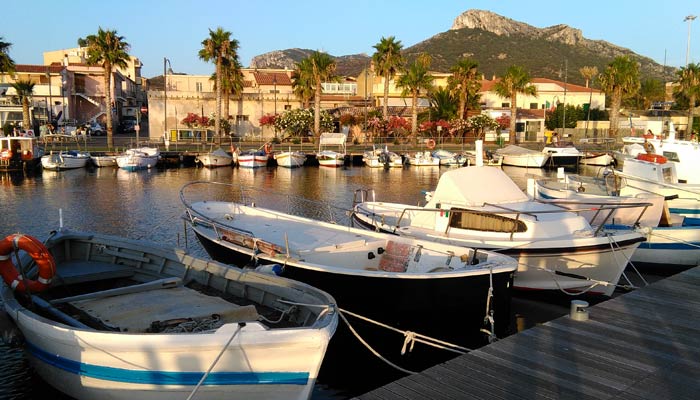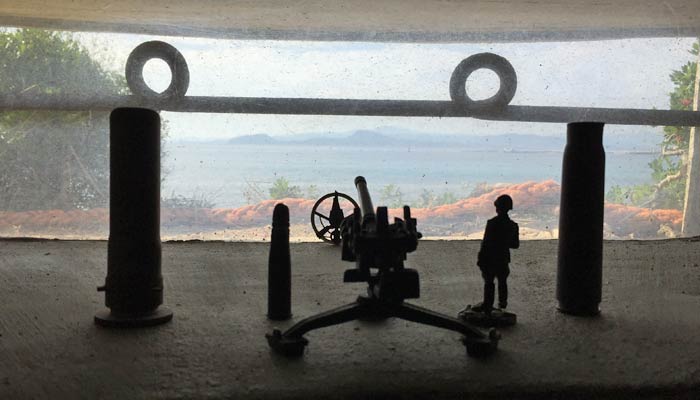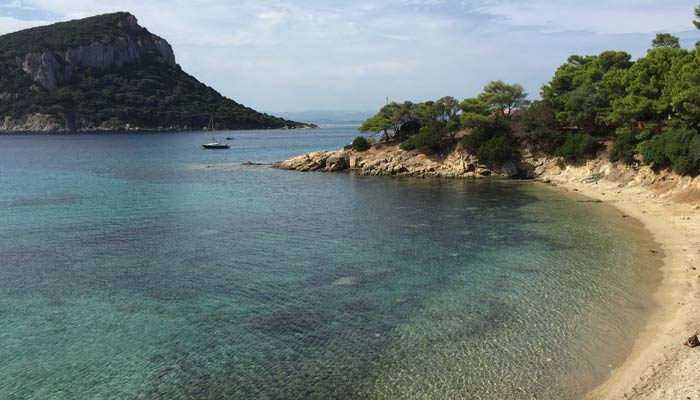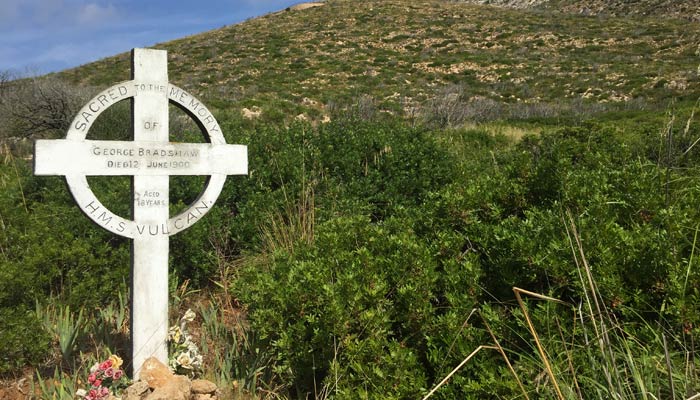I want to tell you about one of the most fascinating naturalistic and historical adventures of Ninon in Golfo Aranci, a town inhabited all the year that overlooks the emerald sea and that in recent years can offer many tourist services and attractions.

It's a typical September day with a clear sky and a just enough warm sun to enjoy a healthy walk through the ancient historical memories and breathtaking landscapes of a territory to be discovered: Capo Figari.
Our walk begins along the ancient disused railway tracks of the Golfo Aranci railway to reach an imposing and sacred monument of the Bronze Age: the sacred well Milis.
Once you get in front of its entrance so dark and mysterious, the curiosity and excitement of visiting it inside are becoming increasingly uncontainable. So with discretion and wonder we enter and discover that it is one of the largest sacred wells of the island with about 43 step, which led and still lead to a generous and deep water basin. Just think that the wall of the room is 10 meters high, like a three-story building. Its rare and bizarre location so close to the coast and far from other finds of nuragic villages, makes it even more original and mysterious.
Thanks to the genius of the Nuraghic men, who chose exactly this strategic position 3000 years ago, the sacred well Milis was used as a water supply until the 19th century, during the construction of the nearby railway tracks. From outside it is possible to recognize its typical ogival shape, which forms its vault and its plan, that recalls the shape of a key. Recognizable for more in almost all the about 100 sacred wells brought to light by archaeologists.
Satisfied with this visit full of memory of the ancient nuragic water cult, we continue along the comfortable, flat and unpaved road in the direction of Cala Moresca.
During our walk enriched by the unmistakable scents of the “maquis”, we see an ancient military fortress overlooking the sea, restored and made available to the public since about 10 years.
We enter inside and we discover with wonder that its imposing exterior size does not correspond to the internal spaces fortified by reinforced concrete.
But the thing that fascinates most is the management of the interior spaces, that are accessed with steps and that we find furnished with old photographs and posters of the time, and divided between living area and sleeping area. There are also the typical political sentences of the time like "when the cannon thunders, it is the voice of the homeland that calls".

Then we leave the fort and coming out we breathe again delicious aromas and let us warm the skin from an increasingly pleasant sun. We begin to recognize the nearby Figarolo islet, whose top is reflected on the water with green and blue reflections.
Here we are in front of the splendor of nature: Cala Moresca that today gives us its unmistakable emerald colors and its timeless peace.

Here are the ruins of the ancient lime kilns, an indispensable resource until the 1960s for the construction of buildings; unfortunately its expensive costs have made it an increasingly difficult resource to produce, and that is the reason, why they were finally abandoned in the '60s, leaving us however an indelible ancient memory.
Climbing on a gentle panoramic serpentine, we see the proud and impressive traffic light of Capo Figari, the scene of one of the most profitable discovery of our generation: the sending of short electric waves for radiocommunication identified thanks to an experiment conducted by Guglielmo Marconi, cerified on 11 August 1932 and of which we still benefit the today technology
Our walk full of historical memories this time brings us to the improperly called cemetery of the English, that it is still full of mystery and charm.
Under the approximately 18/20 graves found, one stands out among all for its Celtic cross of fine wood, which proud and sad still stands after 200 years.
This is the grave of a young American soldier, who tragically died on board the Vulcan due to an unrecognized gastroenteritis and who was buried in this cemetery near the shores of Golfo Aranci.
If we think that until 1932 Golfo Aranci had no cemetery and that the bodies were transported to the nearby cemetery of Olbia by train or by boats to be buried, it is not difficult to imagine that on exceptional occasions, such as storms or economic impossibilities of family members, some bodies of the golfarancini could be furtively buried right here. To validate these hypotheses there are the memories of local inhabitants, who remember these events and who confided to have a relative, who rests in this sacred place rich in peace.

In front of the cemetery of the English we recognize the imposing traffic light of Guglielmo Marconi and decide to undertake the walk that takes place on a steep road with cemented serpentine.
Along the way we are almost petrified by fairytale encounters: we see a mouflon in a lookout on a promontory looking for food to bring to his family and still a little further forward and almost terrified by our presence a wild boar puppy who had brought up here looking of food.
Here we are at the radio bridge of Gugliemo Marconi, a magical place for the breathtaking view of Golfo Aranci, the Figarolo islands, Molara and up to Tavolara but also for its historical importance in science. A simple plaque in local granite reminds us of the event for which it was affixed: the 80th anniversary of the famous scientific discovery by Gugliemo Marconi celebrated on 11 August 2012 with a big feast.
Our experience of historic trekking ends here and we are proud to bring home an unique and great wealth of historical information, that starting from 3000 years ago, passing through the Second World War and taking us to modern times has enriched us and let us growing up
I'll wait for you for your next adventure together
Visiting Luogosanto means immersing yourself in a spiritual and peaceful place, in contact with the tradition and nature of Gallura.
Alghero, known as Barceloneta, is the only Catalan city in Sardinia. It overlooks the northwest coast of the island and its promenade will leave you speechless
Discovering Bonifacio, with its unmistakable French architectural style, with the historical passages of King Carlo Quinto and Napoleone Bonaparte
Share on social networks